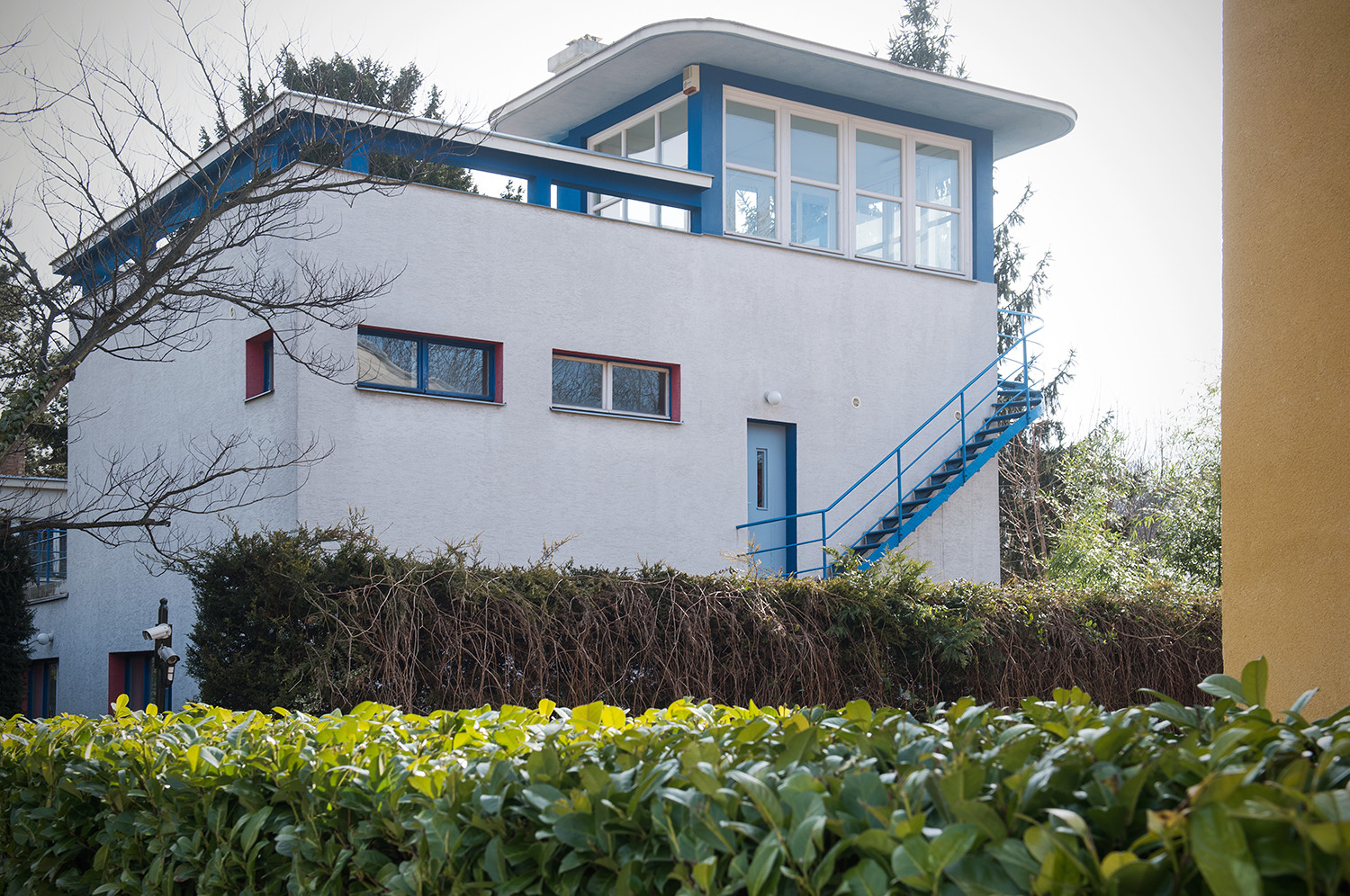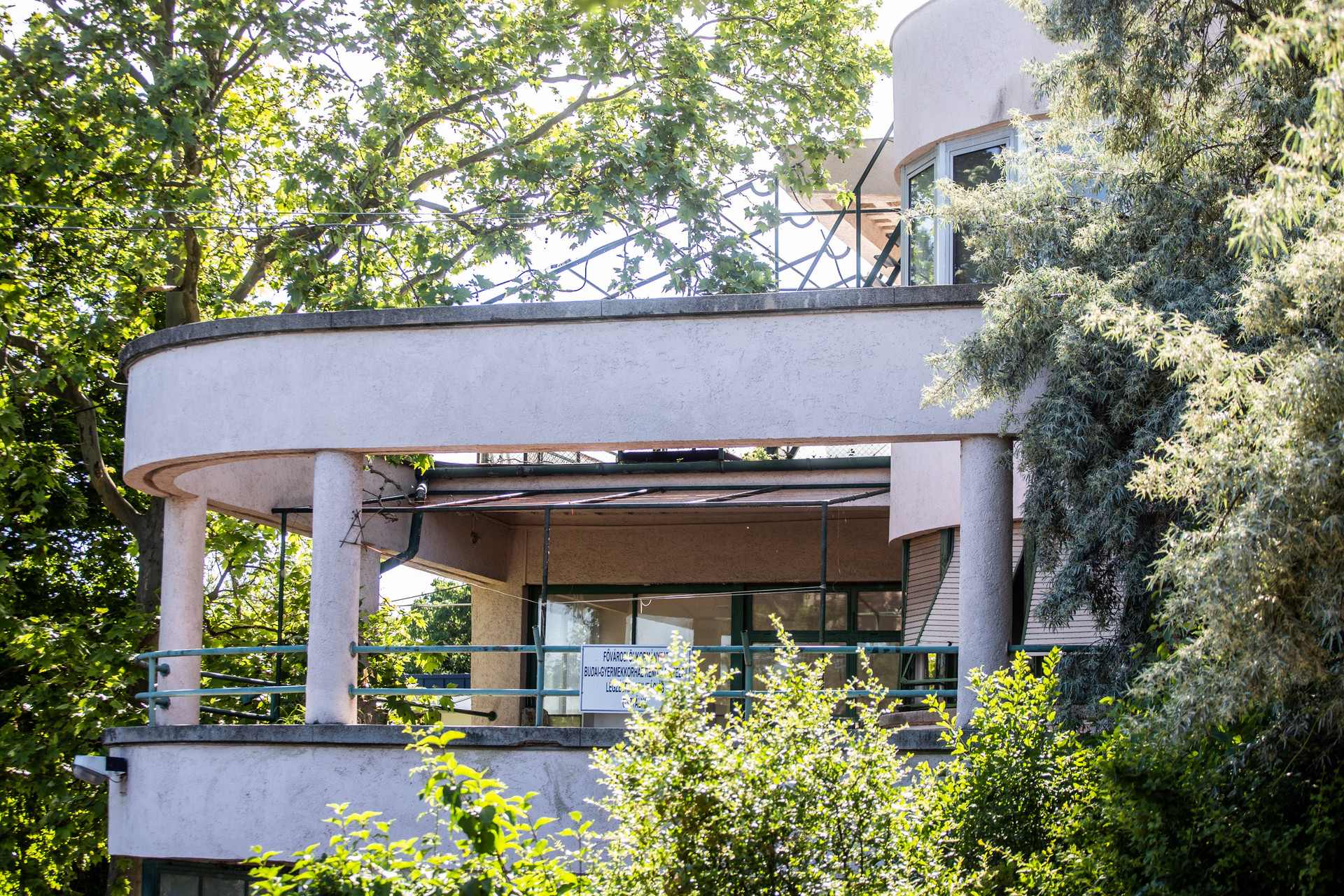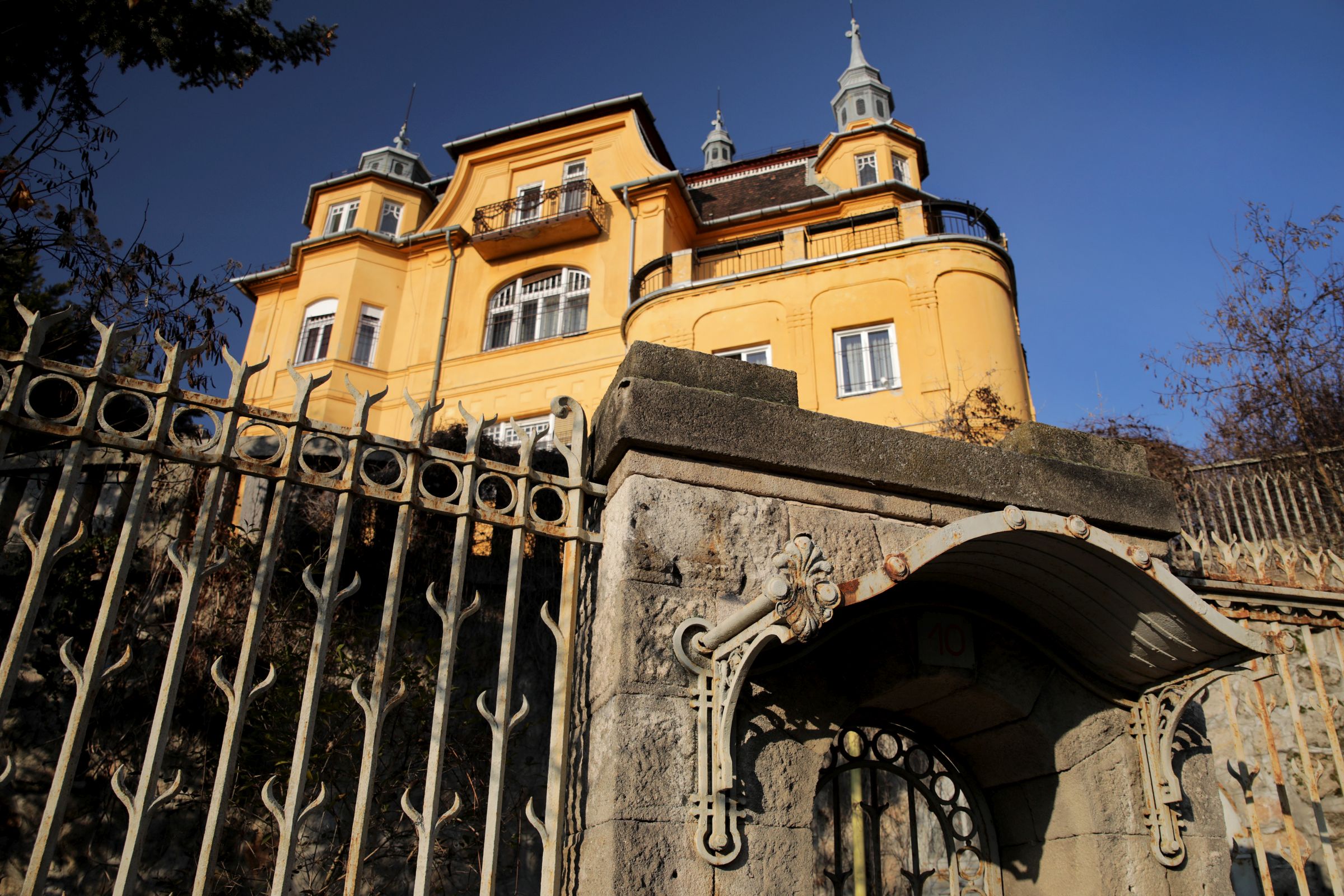Walter Rózsi Villa

Out of all the modern villas, the one on Bajza utca is the one we'd most love to live in, allowing us to connect with opera singer Rózsi Walter, who reportedly burst into tears of joy when she saw the garden side of her home. The curved wooden staircase, original checkerboard balcony tiles, airy and sunny spaces, and elegant design by internationally renowned architects, pervading the whole building, captivated us. The villa, designed by József Fischer and Eszter Pécsi, is unique not only architecturally, but also because it is the first modernist villa in Hungary that is open to the public. It is now occupied by none other than the Hungarian Museum of Architecture. We think it's well worth spending an afternoon in this building, which also has some exciting architectural exhibitions.
Experimental Housing Estate on Napraforgó utca

Created by the best of Hungarian architecture between the two world wars, the Experimental Housing Estate on Napraforgó utca was in fact a response to the housing shortage. It was a model housing estate in Buda that tried new solutions and wanted to give people something different from what they were used to in the tenements. The site near the Ördög-árok (Devil's Trench) was built for the International Architecture Congress held in Budapest in 1930, to show the world how Hungarian architects were responding to the housing challenge. A total of 18 architects worked on the housing estate's 22 buildings, including Farkas Molnár, Lajos Kozma, Alfréd Hajós, József Fischer, and even Henrik Böhm and Ármin Hegedűs.
Hoffmann Villa

We think this house on the corner of Pusztaszeri út and Szépvölgyi út on the Buda side is one of the most famous modernist villas in Budapest. Its archive photos pop up almost weekly in Facebook groups collecting old Budapest buildings or Bauhaus villas. The Hoffmann Villa, located at Szépvölgyi út 88/B, was designed by József Fischer, one of the most prominent figures in Hungarian modern architecture and the head of the Hungarian chapter of the International Congress of Modern Architecture (CIAM). Fischer designed the iconic, pedestal building on a hillside, with huge white surfaces, glazed terraces, and cylindrical form. The pedestal motif is (or was) also visible on his other buildings, such as the Járitz and Walter Rózsi Villas, but unfortunately, this iconic architectural solution was lost during the renovations of the 1990s and 2000s.
Bertalan Árkay's Villa on Alma utca

This villa on Alma utca is an exceptional building, especially because breaking with modern villa traditions, its façade is not white, but pink. Interestingly, the designer, Bertalan Árkay, adapted the building to the orchards on the plot, and in addition to the Bauhaus spirit, there is a hint of Art Deco at the entrance. Árkay was one of the busiest family house architects of the period, and he also designed the Városmajor Church of the Sacred Heart with his father.
Járitz Villa

It appears that the best of our favourite modernist villas were designed by József Fischer and Eszter Pécsi, including the Járitz Villa at 14 Baba utca, commissioned by car parts dealer István Járitz for his family of five. It was completed in 1943, but during the siege of Budapest in World War II it was hit by a bomb and burnt down. According to memoirs, the family watched the burning city from the terrace and could see all the way to Csepel, to the Manfréd Weiss Steel and Metal Works in flames. After the war, the resourceful family managed to rebuild the house, even adding a pool to the garden. The mosaics adorning the pool were designed by none other than Járitz Józsa, the painter sister of István Járitz. Five years later, during the nationalisation, the villa was taken away from them, and in the 1950s, during the polio epidemic, it was converted into a hospital. This was later occupied by the respiratory rehabilitation department of the Szent János Hospital, and finally by the rehabilitation department of paediatric psychiatry.
+1 Lajos Kozma's villa on Lupa Island

Lajos Kozma is as diverse a figure in Hungarian architecture as Béla Lajta, and the similarity is no coincidence: Lajta was Kozma's master. At the beginning of his career, he was more of an artist than an architect: he drew volumes by poet Endre Ady and writer Géza Csáth, studied painting with Matisse, and his first building decorations appeared on Lajta's houses. In the 1930s he turned to modern style, designing numerous family houses and holiday homes in the Buda hills and on Lupa Island. One of his best-known villas here is the reinforced concrete summer house at 8 Platán utca, which he designed himself. It is a symbol of modern architecture to this day. The summer villas he designed had such an impact on people that everyone wanted to have a summer home built in this style.





